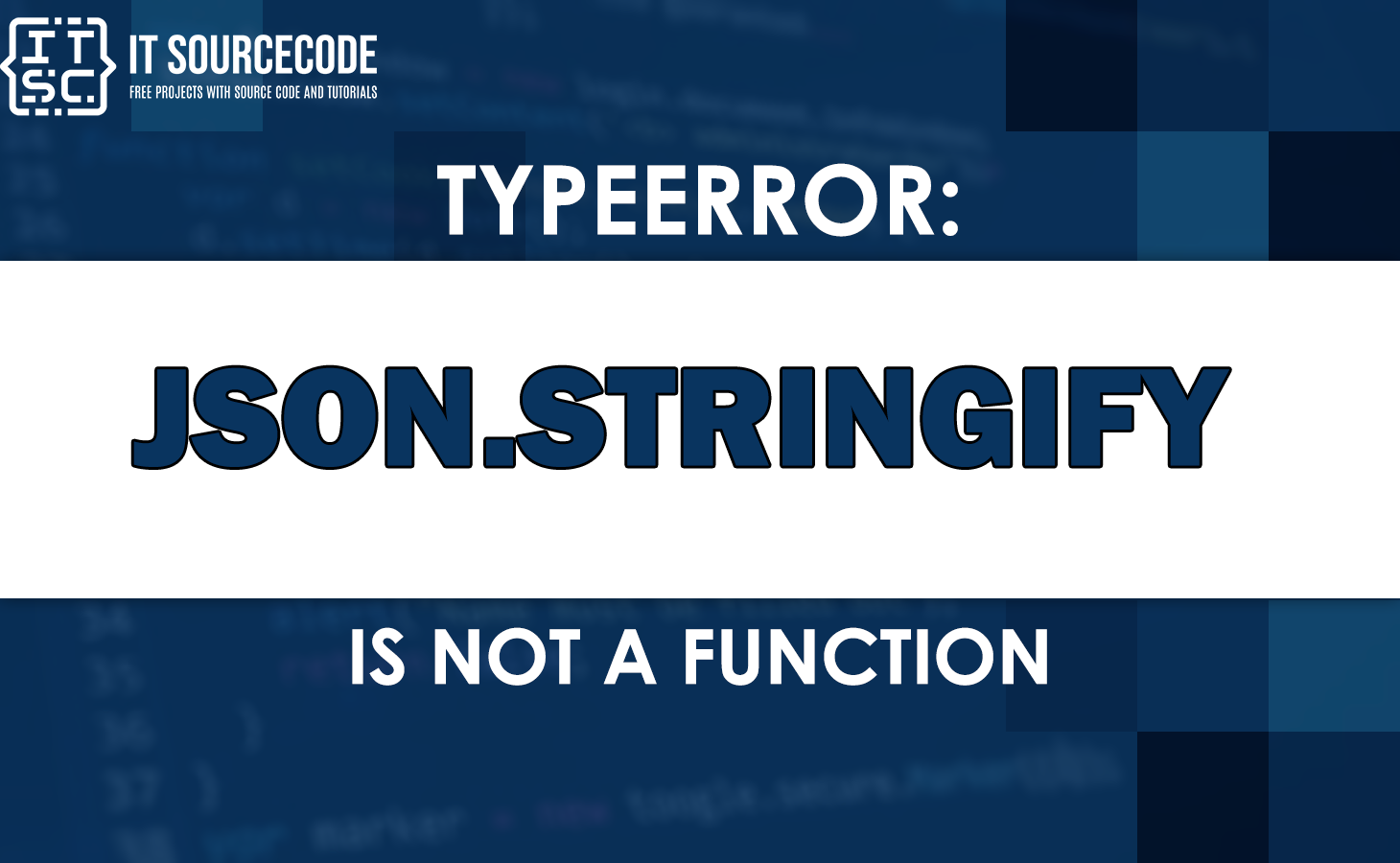How to fix the “typeerror json.stringify is not a function” error message that usually occurs while working with JavaScript.
If this serendipitous error “json.stringify is not a function” occurs while working with JavaScript…
Thus, if you don’t know how to get rid of it, this article is for you.
This is because, in this article, we’ll explore the possible causes of this error and why it occurs in your code.
Certainly, we’ll show you an effective way to solve the “typeerror json.stringify is not a function” error message.
What is json.stringify () method?
The JSON.stringify() method is a built-in function in JavaScript that converts a JavaScript object or value to a JSON string.
This json.stringify () method takes one or two parameters, such as:
- Value → The JavaScript object or value to be converted to a JSON string.
- Replacer (optional) → It is a function that can be used to modify the values and properties of the object that is being converted.
What is typeerror json.stringify is not a function?
The “typeerror json.stringify is not a function” is a common error that can occur in JavaScript.
When you are trying to use the JSON.stringify() method on a non-object or when the method is not defined for a particular object.
Example:
var person = "itsourcecode";
var jsonString = JSON.stringify(name);
console.log(jsonString);
In this example code, we are trying to convert a string value to a JSON string using the JSON.stringify() method.
However, since the JSON.stringify() method only works with JavaScript objects and arrays.
Calling it on a simple string value will result in the “typeerror json.stringify is not a function.”
In order to fix this error, we can wrap the string value in an object or an array, just like the example code below:
var person = "itsourcecode";
var jsonObject = { "name": person };
var jsonString = JSON.stringify(jsonObject);
console.log(jsonString);What are the possible causes of this error?
There are various reasons why you are encountering the “typeerror: JSON.stringify is not a function” error message.
The following are some of the most common causes of this error:
- Using an Older Version of JavaScript
- Incorrect Syntax
- Overwriting the JSON Object
- Incorrect Data Type
How to fix “typeerror json.stringify is not a function”
After we fully understand the possible reasons why you are encountering the “typeerror: JSON.stringify” is not a function error…
Let’s learn how to fix it.
Here are some of the effective solutions to this error:
1. Verify if the JSON object is defined
This code will verify if the JSON.stringify() method is defined, and if not, it will define a new function that converts an object to a JSON string.
if (typeof JSON.stringify !== 'function') {
JSON.stringify = function(obj) {
// code to convert obj to a JSON string
};
}
This solution can be useful in older browsers or environments that don’t support the JSON object natively.
2. Verify if the object is a valid JSON object
By using this code, it will check if the obj variable is a valid JSON object before calling the JSON.stringify() method.
This can help prevent the type error from being thrown when trying to call the method on a non-object.
if (typeof obj === 'object' && obj !== null) {
var jsonString = JSON.stringify(obj);
}3. Use a third-party JSON library
This code uses a third-party JSON library, like MyJSON, to convert the object to a JSON string.
var jsonString = MyJSON.stringify(obj);These libraries frequently provide additional features or support for older browsers that do not have native JSON support.
4. Using a try-catch block
This code uses a try-catch block to catch the typeerror if it is thrown and handle it gracefully.
This can help prevent the program from crashing if the error occurs.
try {
var jsonString = JSON.stringify(obj);
} catch (e) {
console.error('Error: ' + e.message);
}5. Upgrade to a newer version of JavaScript or use a transpiler
This code uses the latest JavaScript syntax, “let” instead of “var,” which is supported in modern browsers and environments.
let obj = {name: 'Itsourcecode', age: 10};
let jsonString = JSON.stringify(obj);Alternatively, a transpiler, such as Babel, can be used to convert newer syntax to older syntax that is more widely supported.
Note: When the above solutions do not resolve the error, you should check your code; it might have a typo or misspelling that needs to be changed.
Conclusion
By executing the different solutions that this article has already given, you can easily fix the “Typeerror: this.clienginector is not a constructor” error message while working with JavaScript.
We are hoping that this article provides you with sufficient solutions.
You could also check out other “typeerror” articles that may help you in the future if you encounter them.
- Typeerror: this.clienginector is not a constructor
- Typeerror byte indices must be integers or slices not str
- Typeerror: path must be absolute or specify root to res.sendfile
Thank you very much for reading to the end of this article.

